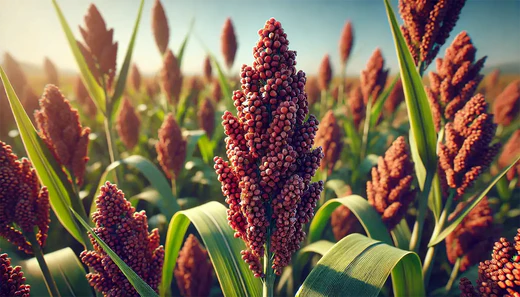
Millet awareness surges, but consumption lags – Here's why
The buzz around millet is growing. More people are learning about its health benefits and environmental advantages. However, this awareness is not translating into actual consumption. Despite being highly nutritious, millet consumption is still relatively low. Why is there such a gap? In this blog, we explore the reasons behind this disparity and how to close it. Millet awareness surges, but consumption lags – Here's why
The millet awareness surges
Millets are becoming famous. Health experts praise their benefits, and environmentalists applaud their sustainability. People are becoming more health-conscious, looking for ways to eat cleaner and more responsibly. Social media influencers and chefs have started talking about millet recipes. Even the government, in some regions, promotes millet for better nutrition. Awareness has certainly surged.
But, there’s a catch. Even with all this awareness, millet is missing from many dining tables. Awareness is one thing, but turning that awareness into a habit is a different story.
Nutritional benefits of millet
Millet is a superfood. It is rich in fibre, vitamins, and minerals. It helps with digestion, controls blood sugar, and even aids in weight loss. Millets like pearl millet, finger millet, and foxtail millet provide essential nutrients. They are also gluten-free, which makes them a great option for those with gluten intolerance.
Besides being healthy, millet has low water needs. It can grow well in harsh conditions. Thus, millet plays a key role in sustainable agriculture. It is perfect for combating climate change effects. So why is millet consumption not growing as much as its awareness?
What is holding millet back?
Millet awareness surges but l;ack of availability in stores
One of the main challenges is availability. Not all supermarkets and local stores stock millets. When a food item is not easily available, people might avoid it. Many people want to buy millet, but they cannot find it in their usual stores. This gap in availability affects consumption.
Perceived complexity of cooking
Cooking millet seems challenging to some people. Many consumers are unaware of how to cook millet properly. They often think it takes too much time or requires special skills. Compared to rice or wheat, millet can seem less convenient. The fear of experimenting with new ingredients stops people from buying millet.
However, the truth is, cooking millet is not that difficult. Simple instructions and more awareness around cooking methods could change this perception. There are also many modern recipes that include millet in everyday meals.
Lack of promotion by food brands
Most major food brands do not promote millet products. Instead, they focus on rice, wheat, and ready-made meals. Millet-based products do not receive the same level of attention. Consumers are bombarded with ads for unhealthy options, which makes millet less desirable. If food brands promoted millet more, people would be more likely to buy and consume it.
Eating habits and preferences
Millet is not part of many people's regular diet. In some areas, millet is seen as a "poor man's food." This perception needs to change. People prefer familiar grains like rice or wheat. Millet has a different texture and taste, which is unfamiliar to many. The lack of millet recipes in mainstream cuisine also discourages people from incorporating it into their diet.
Millet awareness surges but price concerns continue
In some cases, the cost of millet is higher compared to rice or wheat. Price can be a deciding factor for families on a budget. Even if millet is healthier, the price difference might hold them back from buying it regularly. When consumers compare prices, millet often loses to cheaper alternatives.
Millet awareness surges and solutions to boost millet consumption
Increase awareness on cooking millet
Knowledge is power. Showing people how easy it is to cook millet can make a difference. Food bloggers, cooking shows, and even social media can help. Demonstrating simple millet recipes could encourage more people to give it a try. Once they learn how to cook it, they might include it in their diet more often.
Encourage retailers to stock millet
If millet is available in every store, more people will buy it. Government campaigns or community efforts can push retailers to stock millet. When people see millet regularly, they might eventually try it. Accessibility is key.
Food brands can help
Food brands can play an important role. They could create millet-based ready-to-eat options, snacks, and breakfast cereals. Promotions for millet products could help make it a trendy, healthy choice. When brands embrace millet, consumers will follow.
Incorporate millet into school meals
School meal programs could help introduce millet to young children. By making millet part of their diet from a young age, children will develop a liking for it. Schools could also run awareness campaigns, helping parents understand millet’s value. This approach could create a whole new generation that prefers millet over other grains.
Government incentives
The government has the power to boost millet consumption. Subsidizing millet or providing incentives for farmers can make it more affordable. Campaigns promoting millet’s health benefits could reach a wide audience. By partnering with NGOs, community groups, and farmers, governments can change public perception.
The path forward for millet consumption
The journey from awareness to consumption requires effort. Awareness campaigns have succeeded in highlighting millet’s benefits. Now, it's time to take the next step. Making millet accessible, teaching people to cook it, and changing perceptions can increase consumption. The government, retailers, and food brands all have a role to play.
Millet is not just a healthy food; it’s a symbol of sustainable living. By choosing millet, we are supporting farmers, protecting the environment, and embracing better health. Bridging the gap between awareness and consumption will benefit everyone. Let’s work together to bring millet to our tables.
Conclusion
Millet awareness is on the rise, but awareness is just the first step. To increase millet consumption, we need to address availability, cost, convenience, and perception. The future is promising if all stakeholders come together to promote this nutrient-rich, sustainable grain. Together, we can close the gap between knowing millet and loving millet. Let's make millet an everyday choice, not just an idea.
Image Courtesy: PEXELS
Did you find this blog post helpful? Got ideas or questions? Join the conversation below! Your insights could help others too, so don’t hesitate to share!
Please note that all comments will be moderated before being published.




